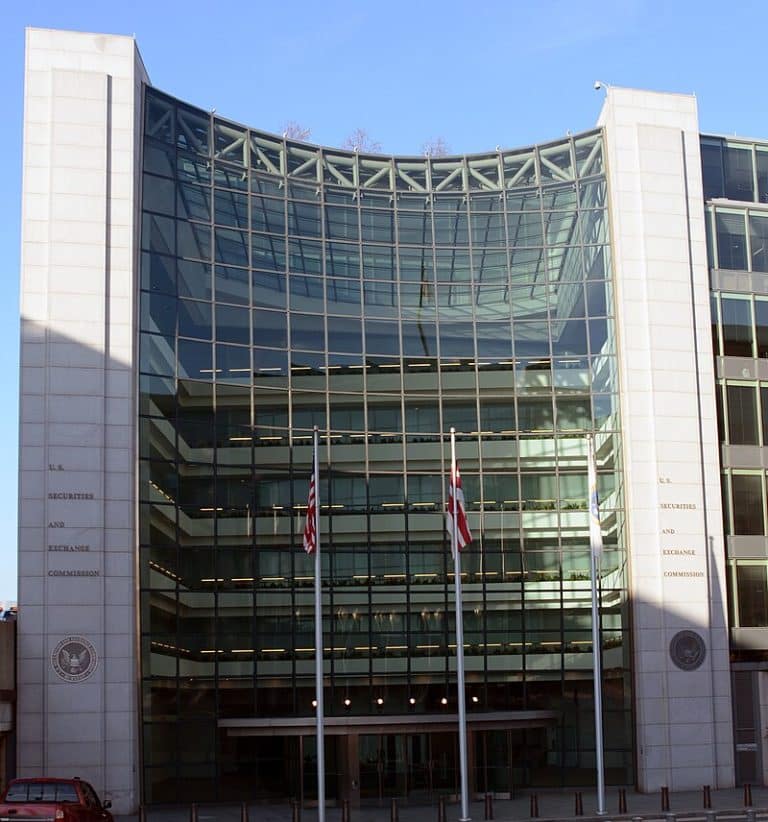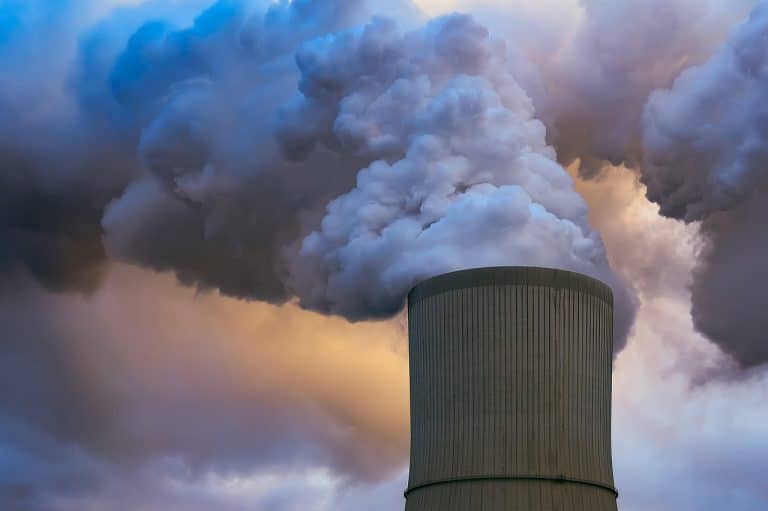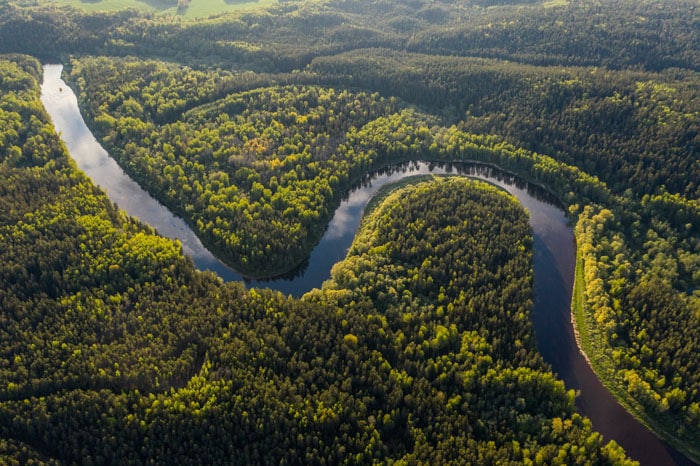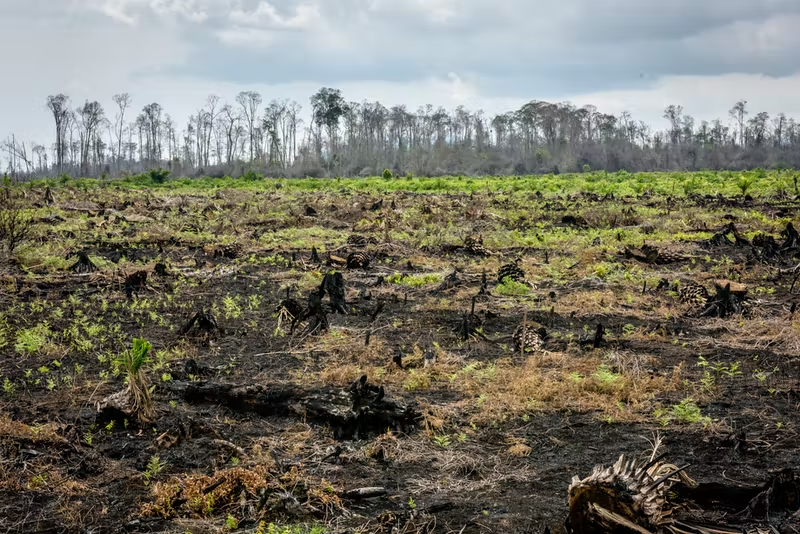Oil and gas producers. Heavy industry. Planes, trains, and automobiles.
Farming?
The list of the leading sources of CO2 emissions includes one that most people probably wouldn’t put on the list. After all, what does farming have to do with climate change?
Modern Farming: A CO2 Factory
Growing crops, by itself, doesn’t cause any harm. In fact, growing plants of almost any kind are basically practicing small-scale carbon sequestration. That’s because plants use photosynthesis to combine energy from the sun, CO2 from the air, and minerals from the ground to build their basic structure. In doing so, plants form part of the carbon cycle.
When they die, the carbon-based structure of the plants starts to decay. Some of that CO2 is released directly into the air, and some of it can be trapped underground. Grasses and other fast-growing plants extract CO2 quickly and tend to release it quickly when they decompose; trees, like giant hardwoods, can take much longer both to sequester and release carbon.
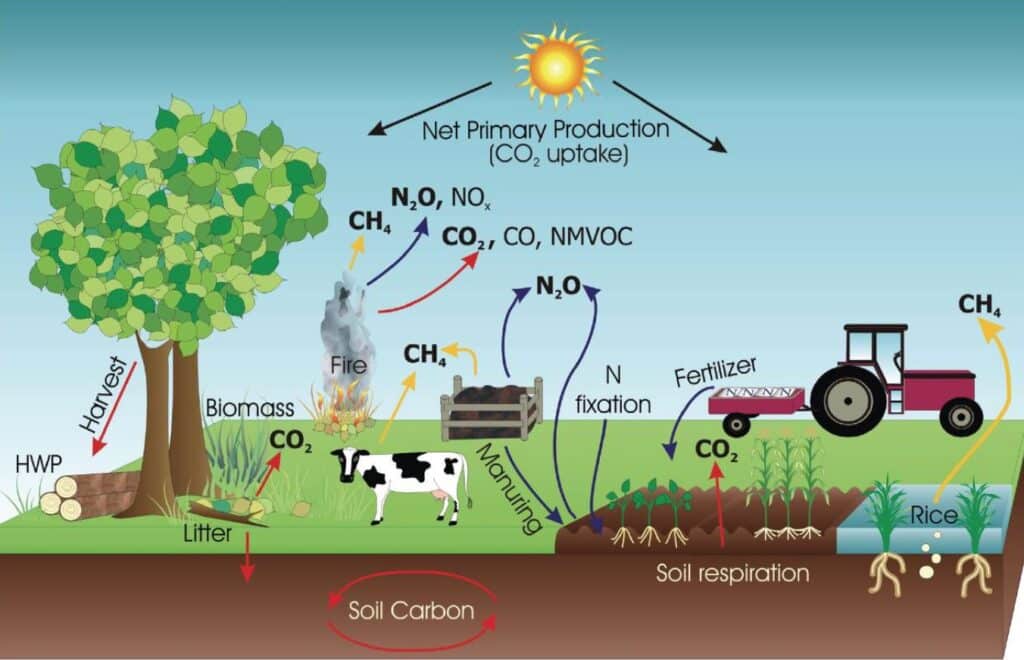
So far, so good. Farming relies on growing crops regularly and rapidly – good news for CO2 emissions, right?
Unfortunately, not so much. Industrialized, modern farming employs a number of practices that result in net CO2 emissions. Carbon farming is less of a set of specific practices and more of a broad-level approach to land use.
Multiple Definitions of Carbon Farming
There are a number of approaches that can broadly be referred to as “carbon farming.” Some of them have relatively little to do with agricultural production.
In a very general sense, carbon farming can be thought of in two ways: farming carbon and carbon-friendly farming.
This article deals primarily with the latter – reducing atmospheric carbon emissions by employing a basket of climate-friendly practices. Both kinds generally deal with agricultural land use reform and changing agronomic practices.
A recent study commissioned by the EU identified five general categories of carbon farming practices that can apply variously to both kinds of carbon farming:
- peatland rewetting and restoration
- agroforestry
- soil organic carbon (SOC) enhancement
- livestock and manure management
- nutrient management on croplands and grasslands
Each category holds immense potential for carbon offsets and credits on the broader carbon market, as well as a range of co-benefits.
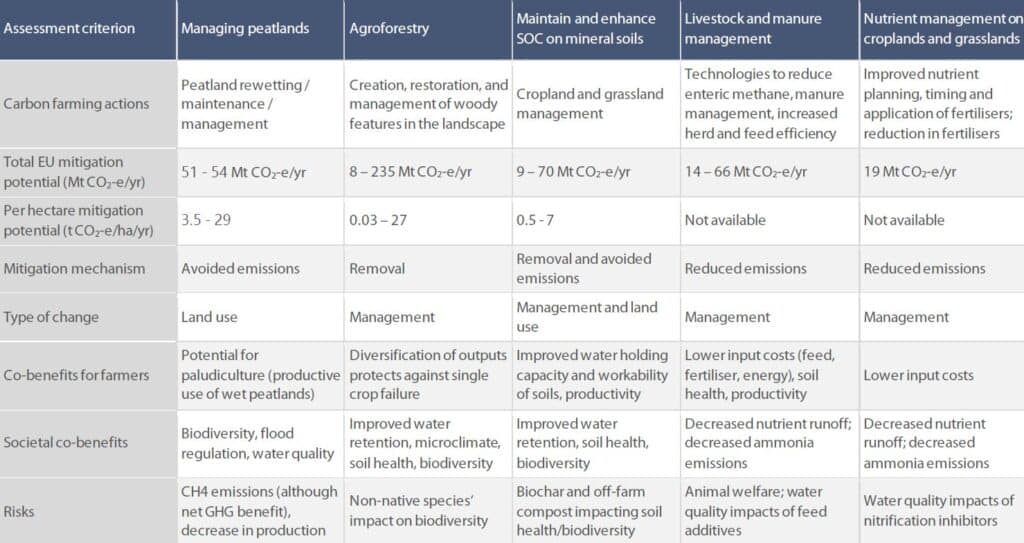
Making Agricultural Carbon-Friendly
Modern agriculture relies on growing crops rapidly, intensively, and repeatedly. In major grain-producing centers, that might look like uniform acres of wheat or corn. In less developed countries, it might mean farmers routinely burning off old crops to prepare fields for new planting.
Both large- and small-scale intensive farming emits more CO2 than it locks away. Carbon farming tries to reverse that trend.
Some of the changes carbon farming brings are fairly simple. Mulching old crops, rather than burning them, locks away carbon in the soil. Reducing or eliminating tilling keeps that carbon underground for longer. No one practice reverses the CO2 emissions entirely; instead, carbon farming aims to use a basket of approaches to achieve crop production that removes atmospheric carbon.
Benefits and Co-benefits of Carbon Farming
Most carbon offset projects feature the concept of co-benefits – side-effects of the project that are beneficial in ways beyond direct CO2 removal. Carbon farming relies even more heavily on co-benefits than most offset projects.
Carbon farming initiatives such as advanced mulching offer the potential to improve overall soil health. Organic matter in agricultural soils increases with carbon farming. That provides a direct boost to the carbon cycle, but also boosts insect presence and soil organic carbon (SOC), both necessary for healthy soils.
The use of advanced crop rotation and cover crops also provide co-benefits. They may boost biodiversity through increased cover for birds and margin-loving animals. They can also reduce soil erosion as part of a set of agricultural practices aimed at being both productive and environmentally friendly.
Broadly, carbon farming fits under the umbrella of regenerative agriculture; practices designed to make carbon farming more eco-friendly. In some cases, that may also mean changing land use patterns altogether, such as restoring native forests or wetlands.
Verification and Regulation – A Familiar Problem
Carbon farming faces a number of challenges. Verification and regulation are among the biggest ones. Because carbon farming relies on a number of overlapping approaches, measuring total carbon sequestration and removal becomes increasingly difficult.
Current practices involve estimating the maximum mitigation potential for a given environment and then enacting practices to meet that potential.
Selling carbon credits on the Voluntary Carbon Market VCM requires measuring exact mitigation, and that poses a problem for carbon farming offsets. In some cases, modeling offset reductions can be used alongside measurement to help give a better picture.
Emerging Issues with Carbon Farming
The voluntary carbon market itself is growing by leaps and bounds. It stands to reason that carbon farming, like all sectors within the VCM, faces its own set of emerging issues.
Leakage
Leakage occurs when carbon gains in one area are offset by carbon losses in others. Think of leakage as the opposite of co-benefits; practicing no-till farming, for instance, might lead to increased clearing of woodland or wetlands to offset any production loss. Preventing leakage requires carbon farmers to clearly analyze the carbon sequestration potential of any approach they take.
Costs
Not all farming initiatives are created equal. It brings with it two costs which vary between approaches.
Like all climate change mitigation approaches, carbon farming imposes monetary costs. Those costs can be passive: restoring wetlands can take away opportunities for a cash crop. Approaches like no-till farming might also require increased human activity and labor costs. In both cases, achieving climate benefits comes at a real-world cost.
Carbon farming brings the added cost of impacting agricultural productivity. That could include reduced crop yields or, in the case mentioned above, loss of land available for food sources.
Application
The impacts of climate change are felt unevenly; the suitability of CO2 farming approaches is similarly uneven. Degraded soils might not be compatible with some techniques.
Soil carbon sequestration methods may work better with some geographies than others. In some cases, farmers and carbon offset projects need to carefully consider how various carbon sequestration techniques will impact food security and the broader food chain.
Potential
In the EU alone, estimates indicate that carbon farming as a basket of approaches has the potential to mitigate between 9-13% of total EU CO2 emissions, a significant percentage. That maximum mitigation potential positions carbon farming as a key growth sector in the VCM going forward.
The fact that carbon farming applies unevenly may also be a benefit in the short term. Since some aspects can be adopted and measured more easily, there’s an incentive to monetize carbon farming on the VCM quickly. Carbon farming approaches can also satisfy the need for immediate action on climate change and a demonstrable climate impact.
In short, the very fact that carbon farming means a number of things to different people also means that it is poised to be a key growth sector in the VCM. It can offset potentially huge amounts of atmospheric carbon dioxide, provide immediate climate benefits, and satisfy the continued demand for carbon offsets.



